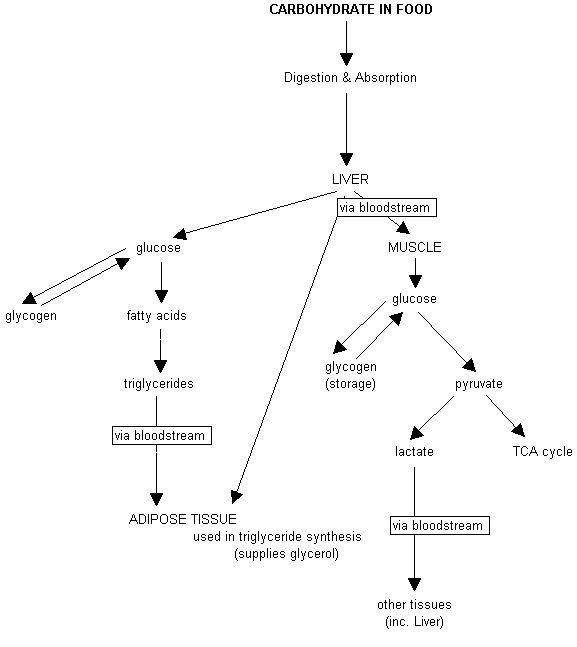Yes. Some of the carbs you eat are use immediately to produce energy now, some will be stored in your liver as an energy source for later and some of it will be converted to fat. The reason we focus in this website on heart healthy eating (among other things) is because it so important for our health.
This is how it works:
Carbohydrates (Carbs) and metabolism
The major source of dietary carbohydrate for humans is starch from consumed plant material. This is supplemented with a small amount of glycogen from animal tissue and other sugars such as sucrose from products containing refined sugar and lactose in milk.
Digestion in your GI tract (small bowel) converts all carbohydrates to simple sugars which are transported to the liver and converted to glucose. The liver has a central role in the storage and distribution within the body of all fuels, including glucose.
Glucose in the body undergoes one of three metabolic fates :
1. It is changed (“burned”) to produce a coenzymecalled adenosine triphosphate (ATP). This occurs in all peripheral tissues, particularly in brain, muscle and kidney.
2. It is stored as glycogen. This storage occurs in liver and muscle.
3. It is converted to fatty acids. Once converted to fatty acids, these are stored in adipose tissue as triglycerides.
What is Glucose / Carbohydrate metabolism
Once our food starts digesting, the first nutrient that is extracted into the blood is glucose. Your body responds by producing insulin. If the concentration of glucose in the blood is too high, insulin is secreted by the pancreas, which stimulates the transfer of glucose into the liver and muscle cells.
There it is changed into glycogen by a process called glycogenesis (anabolism). Glycogen is stored there until needed at some later time when glucose levels are low. When that happens (If blood glucose levels are low), other hormones, eqinephrine and glucogon are secreted to stimulate the conversion of glycogen back to glucose. This process is called glycogenolysis (catabolism).
If glucose is needed immediately upon entering the cells to supply energy, it begins the metabolic process called glycolysis (catabolism).
This is what it looks like:
 See how some of it ends up as Triglycerides and fat?
See how some of it ends up as Triglycerides and fat?
Hope this helps,
Dr T
